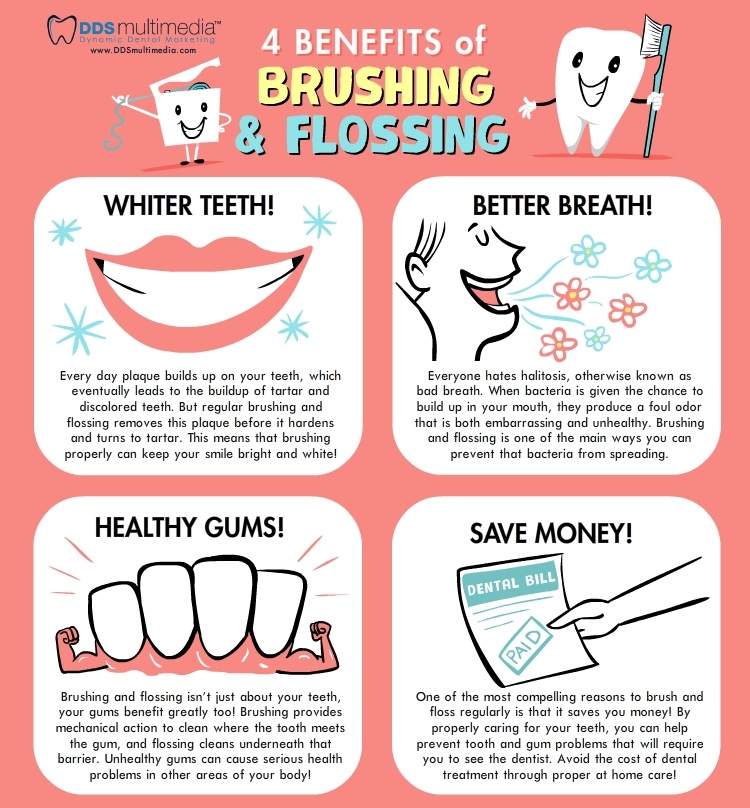Invisalign Vs. Conventional Braces: A Detailed Contrast
Invisalign Vs. Conventional Braces: A Detailed Contrast
Blog Article
Material Author-Hamann Freeman
When confronted with the decision between Invisalign and standard braces, you might wonder which choice aligns better with your lifestyle and choices. The option includes greater than just the aesthetic appeal; it looks into aspects like treatment duration, comfort, and long-term dental health and wellness impacts. Consider the effect each option might carry your daily regimen and self-esteem. As we check out the detailed contrast, you'll get understandings into the subtleties that make these orthodontic treatments one-of-a-kind and uncover which one might be the far better suitable for you.
Products and Building
When comparing Invisalign to typical braces, the products and building and construction differ considerably. full mouth dental implants cost with insurance includes clear, smooth plastic aligners tailor-made to fit your teeth. These aligners are virtually undetectable, making them a prominent option for those seeking a much more discreet orthodontic therapy.
On the other hand, typical dental braces include metal brackets that are glued to your teeth. These braces are after that linked by cords and elastic band, applying pressure to slowly shift your teeth right into the desired position.
The construction of Invisalign aligners enables a more comfortable fit compared to conventional dental braces. The smooth plastic product reduces irritation to your cheeks and gums, which is a common concern with metal braces and cords. Furthermore, Invisalign aligners are removable, making it easier to brush and floss your teeth with no blockages.
In contrast, traditional dental braces are fixed onto your teeth, calling for extra treatment and time for proper maintenance.
Maintenance and Oral Hygiene
The maintenance and oral hygiene practices vary in between Invisalign and standard braces due to their one-of-a-kind layout and building and construction.
With Invisalign, you can eliminate the aligners when consuming or cleaning your teeth, allowing you to keep your routine dental hygiene routine without any blockages. It's critical to brush your teeth after eating prior to placing the aligners back on prevent food fragments from obtaining entraped and triggering decay.
On the other hand, standard braces require added interest to maintain your teeth tidy. Food fragments can easily get stuck in the braces and wires, causing plaque accumulation and potential tooth decay. You'll require to use special tools like interdental brushes or floss threaders to clean in between the wires and braces effectively.
Normal oral exams and cleanings are vital to make certain that your dental health is in top condition while putting on traditional dental braces.
Exposure and Appearance
Exposure and looks play a considerable duty in the comparison in between Invisalign and standard dental braces. When it involves appearance, Invisalign supplies a clear advantage over conventional dental braces. Invisalign aligners are essentially unnoticeable, making them a prominent choice for those who choose a much more very discreet orthodontic therapy alternative.
Unlike the noticeable steel braces and cables of traditional braces, Invisalign aligners are clear and assimilate with your all-natural teeth, enabling you to grin confidently throughout your treatment.
Conventional dental braces, on the other hand, are more obvious because of their metal components. While dentist for seniors near me might select colorful bands to customize their braces, others may feel uncomfortable concerning the exposure of these orthodontic home appliances. The famous appearance of standard dental braces can often impact an individual's self-confidence, specifically for grownups in expert settings.
Final thought
To conclude, when selecting in between Invisalign and traditional dental braces, consider your way of life and preferences. Invisalign supplies a discreet and comfy option with simple maintenance, while traditional braces provide vibrant modification however may affect self-worth.
Ultimately, the decision should be based upon what works best for you in regards to visual appeals, ease, and convenience. See to it to seek advice from your orthodontist to establish the most suitable therapy for your private requirements.
